Introduction
Diversity and inclusion have become critical aspects of storytelling in TV and film. As audiences grow more diverse, the demand for authentic representation on screen continues to reshape the entertainment industry. This article explores how diversity and inclusion have evolved, their impact on audiences and creators, and the challenges and opportunities ahead.
The Evolution of Diversity in Entertainment
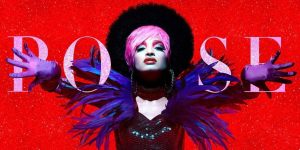
Why Diversity and Inclusion Matter in Entertainment

Diversity in TV and movies helps stories reflect the many cultures and experiences in our world. Inclusive stories build understanding, break stereotypes, and create empathy. When people see characters like themselves, it makes their experiences feel real and entertainment more relatable.
Being inclusive isn’t just the right thing to do it’s also smart business. Studies show that diverse content attracts bigger audiences and earns more money.
The Progress So Far
In the last 10 years, TV and movies have made big steps toward inclusion:
- Casting: Actors of color, LGBTQ+ performers, and those with disabilities now get leading roles in big productions.
- Storylines: Stories about different cultures and experiences are becoming more common.
- Behind the Scenes: Diverse writers, directors, and producers are helping reshape how stories are told.
Shows like Pose and Never Have I Ever have been praised for showing the real lives of marginalized communities.
The Benefits of Diversity in TV and Film
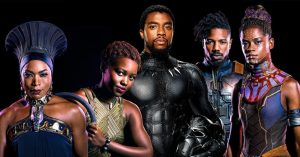
Diversity in TV and movies has many benefits. It helps people feel seen by showing characters they can connect with. It also breaks stereotypes and teaches viewers about different cultures and experiences. Plus, diverse movies and shows often do better, making more money and reaching bigger audiences.
Why Diversity Matters in Stories
Diversity makes stories richer and more exciting. When creators include people from different backgrounds, they can tell more meaningful and unique stories. These stories show a more accurate picture of the world, where everyone matters no matter their race, ability, or gender. They also spread important messages about equality, justice, and understanding.
The Growth of Diverse Content in Streaming Platforms

Streaming platforms like Netflix, Hulu, and Amazon Prime have made it easier for diverse stories to reach people around the world. These services give creators from all backgrounds a chance to share their work. As streaming grows, these platforms are investing more in shows and movies that highlight different cultures and viewpoints. This trend is encouraging traditional TV and film to embrace diversity, and audiences are loving it.
How Diversity Boosts Creativity
Diverse casts and crews bring fresh ideas to TV shows and movies. Different perspectives lead to original stories, unique characters, and exciting plots. This challenges old ways of storytelling and makes the entertainment industry more interesting and creative.
Diversity as a Smart Business Move
Diversity isn’t just the right thing to do it’s good for business. Movies and shows with diverse casts attract bigger, more varied audiences. This means more success and higher profits. Entertainment companies are realizing that inclusive content not only meets audience demand but also improves their reputation and earnings.
The Importance of Behind-the-Scenes Diversity

Diversity on screen is important, but it’s just as important behind the scenes. Directors, writers, and producers from different backgrounds bring fresh ideas. When diverse voices help create stories, they can make sure those stories are real and respectful. This leads to better representation and more meaningful content.
How Audiences Are Changing TV and Movies
Viewers today speak up about the content they want. Social media and online groups give fans a platform to share their thoughts. Many are asking for more diversity in stories. Social movements and online campaigns have given audiences more power. Studios and networks are listening because it’s clear diversity isn’t a trend. It’s what people expect and want in their entertainment.
The Role of Social Media in Promoting Diversity

Social media has played a big role in pushing for more diversity in TV and movies. Fans use platforms like Twitter, Instagram, and TikTok to share their opinions and support shows with diverse stories. These platforms give people a voice to point out when representation is missing or when a show does it well. Social media campaigns can highlight important issues, and studios pay close attention to what audiences are saying.
The Demand for Diverse Stories in Different Genres
Diversity isn’t just about race or gender it’s also about the types of stories being told. Audiences want more genres to include diverse characters, settings, and plots. For example, fantasy and science fiction shows that mix different cultures are becoming popular. This demand for fresh genres lets creators explore new ways to tell exciting and inclusive stories.
Impact of Diversity on Young Viewers

Young people are greatly influenced by what they see on TV and in movies. Watching diverse characters helps them understand others and feel empathy. It also boosts their confidence when they see characters who look like them. Diversity in kids’ TV and movies is especially important because it shapes how the next generation views themselves and others.
Challenges in Casting Diverse Actors
Casting diverse actors is key to better representation, but it’s not always easy. Actors from marginalized groups are sometimes overlooked for big roles or only cast in stereotypical parts. To fix this, studios need to change how they make casting decisions. They should actively look for talented actors from all backgrounds and give them roles that break stereotypes. This creates more chances for true diversity on screen.
The Need for More Diverse Storytelling Voices
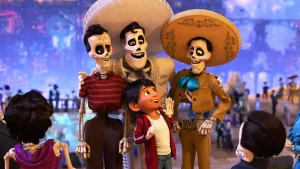
While onscreen diversity is essential, it’s equally important to have diverse storytellers directors, screenwriters, and producers who understand and respect the cultures they are representing. More writers and directors from underrepresented groups need to be given opportunities to create and shape content. This leads to more authentic and meaningful stories that can resonate with a wider audience.
The Impact on Audiences
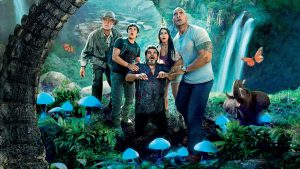
Representation matters. Seeing relatable characters on screen helps people feel they belong. Studies show that diverse stories can change how viewers think about different cultures and communities.
Inclusive storytelling builds empathy, breaks stereotypes, and encourages understanding. This is especially important for young viewers. When they see heroes who look like them, it inspires confidence and dreams.
Why Inclusive TV and Movies Are Important
- Empowerment: Marginalized groups feel seen and valued.
- Education: Viewers learn about different cultures, identities, and ideas.
- Social Change: Real-world issues in stories spark conversations and inspire action.
Opportunities for Creators and Studios

Diversity is not just the right thing to do it’s also good for business. Movies and shows with diverse casts often make more money. The success of films like Crazy Rich Asians shows that inclusive stories can be a big hit.
Streaming platforms like Netflix and Amazon Prime Video are investing in diverse content to reach global audiences. This creates chances for creators from all backgrounds to share their unique stories.
Challenges in True Inclusion
While there’s been progress, challenges remain. Tokenism when diverse characters are added without depth is still a problem. Barriers in Hollywood also make it hard for marginalized creators to get funding and opportunities.
Fixing this takes time and effort. Mentorship programs, fair hiring, and better representation in decision-making roles are key to real change.
The Role of Global Audiences
TV and film are now more global than ever. Audiences from different countries want stories that reflect their lives and cultures. Platforms like Netflix and Disney+ connect these stories to international viewers, making diversity even more important. This opens exciting new possibilities for inclusive storytelling.
Future Trends in Diversity and Inclusion
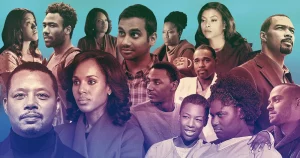
The future looks promising as audiences demand authentic representation. The rise of independent films and diverse streaming content signals a shift toward inclusivity. Technological advancements like AI in casting may also help eliminate biases.
Films exploring intersectional identities highlighting characters from multiple marginalized groups are expected to grow. This deeper level of storytelling will likely redefine narratives in TV and film.
What’s Next for Diversity in TV and Film?
The future looks promising as the entertainment industry continues to prioritize inclusivity. To ensure sustained progress:
- Support Emerging Talent: Nurture creators from underrepresented backgrounds.
- Global Collaboration: Share stories from different parts of the world.
- Audience Advocacy: Viewers can demand better representation by supporting inclusive content.
With these efforts, entertainment can continue to inspire and unite audiences worldwide.
Analysis Table: Benefits of Diversity and Inclusion
| Aspect | Impact on Industry | Impact on Audiences |
|---|---|---|
| Cultural Representation | Expands market reach and fosters cross-cultural connections | Builds awareness and understanding of different communities |
| Financial Performance | Diverse content often outperforms less inclusive projects | Encourages audience loyalty and broader appeal |
| Social Influence | Drives societal progress and inclusivity | Inspires empathy and breaks stereotypes |
Comparative Table: Past vs. Present Approaches
| Aspect | Past | Present |
|---|---|---|
| Representation | Limited and stereotypical | Broader and more authentic |
| Opportunities for Creators | Restricted for minorities | Increasing opportunities across platforms |
| Audience Expectations | Limited awareness of diversity | Strong demand for inclusive and relatable storytelling |
Conclusion
Diversity and inclusion are transforming TV and film, enriching stories and deepening audience engagement. While challenges remain, the industry’s progress signals a positive shift toward fair and authentic representation. The future of entertainment is undoubtedly more inclusive, promising richer narratives and wider appeal.




